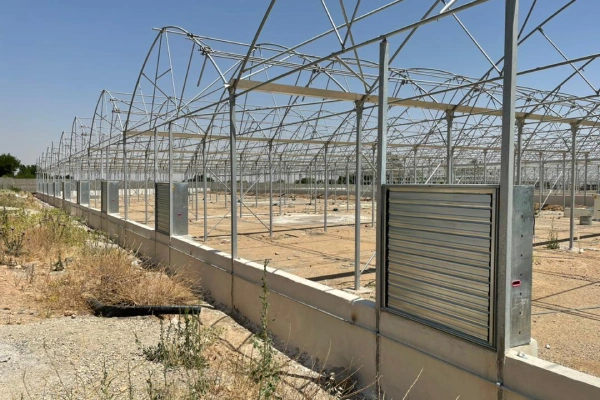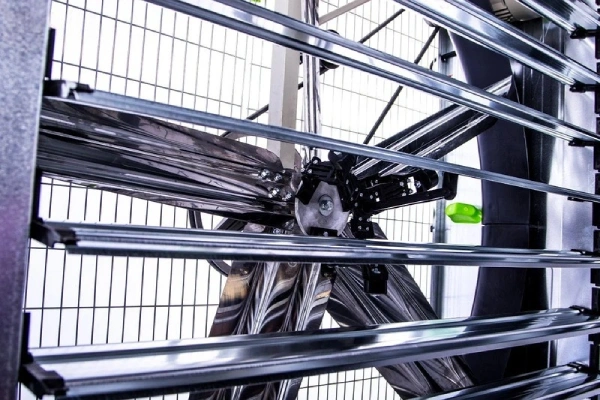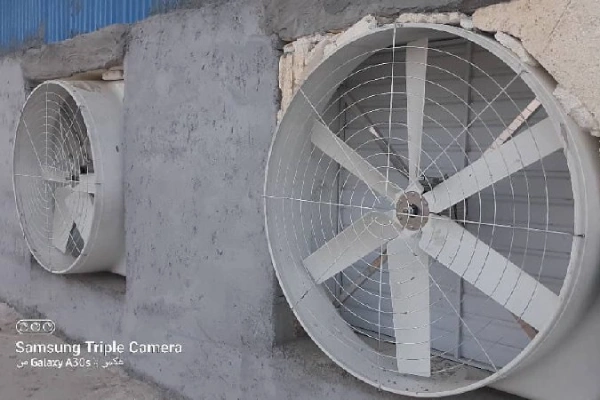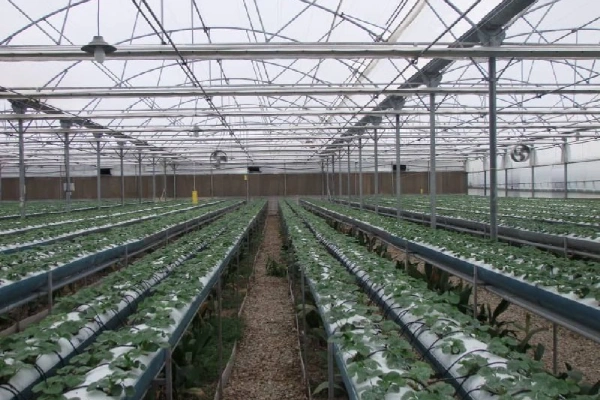Industrial Ventilation Standard + Everything You Need to Know

In the bustling world of industry, clean and healthy air is not only a privilege, but a necessity. As the lungs of these environments, industrial ventilation systems play a vital role in providing clean and safe air. With the advancement of technology and increasing awareness of the effects of air pollution on employee health and productivity, industrial ventilation standards have been established for industrial ventilation technology. In this article, we will examine the importance of industrial ventilation, the standards governing it, and the benefits of complying with these standards.
Table of Contents
- Why Are Industrial Ventilation Standards Important?
- Key Standards in Industrial Ventilation
- Key Tips for an Efficient Ventilation System
- Benefits of Adhering to Industrial Ventilation Standards
- Challenges and Solutions in Implementing Industrial Ventilation Standards
- Alvand Industrial Group: A Leader in Industrial Ventilation Solutions
Why Are Industrial Ventilation Standards Important?
Adhering to international standards in industrial ventilation is of utmost importance. These standards not only help improve the air quality of the work environment and safeguard the health of workers but also play a crucial role in enhancing productivity and reducing production costs.

Improving Air Quality and Employee Health:
By adhering to standards, fresh and clean air is injected into the workplace, while pollutants and harmful particles are eliminated. This helps prevent respiratory diseases and other health issues among employees, enhancing their job satisfaction and overall well-being.
Increasing Productivity and Reducing Costs:
Ventilation systems that comply with standards operate more efficiently and reduce energy consumption. Lower energy costs and improved equipment efficiency result in significant savings in production expenses.
Quality Management and Ensuring Sustainable System Performance:
International standards provide a framework for quality management and continuous improvement of ventilation systems. By following these standards, the consistent performance of systems is ensured, preventing potential issues and breakdowns. These standards also aid in obtaining international certifications and enhance the company’s credibility.
In summary, adhering to industrial ventilation standards, such as exhaust fans, is not only a legal requirement but also a long-term investment for improving work conditions, increasing productivity, and reducing costs.
Familiarity with industrial ventilation standards is essential to maintaining employee health, increasing productivity, reducing energy costs, and ensuring the quality of manufactured products. These standards help organizations by improving workplace air quality, reducing risks from pollutants, and creating safe working conditions.
Key Standards in Industrial Ventilation
Industrial ventilation, such as poultry house heaters in poultry houses, as a vital process in maintaining air quality and workplace safety, requires specific standards. These standards define and guarantee the performance of equipment, air quality and overall management of ventilation systems. Below, we will examine some of the most important international standards in the field of industrial ventilation.

ASHRAE 62.1 and 62.2: Indoor Air Quality Standards
The American Society of Heating, Refrigerating, and Ventilating Engineers (ASHRAE) has developed standards 62.1 and 62.2 to specify minimum indoor air quality requirements for various spaces. Standard 62.1 is for commercial and industrial spaces, and 62.2 is for residential spaces. These standards specify the required ventilation rates, air quality, and other parameters relevant to human health and comfort.
EN 779 and its replacement by ISO 16890
The European standard EN 779, like ISO 16890, was used to classify air filters based on their efficiency in removing particles. However, ISO 16890 has replaced EN 779 due to its greater comprehensiveness and compliance with current needs.
ISO 9001: Quality Management Standard
The ISO 9001 standard is an international standard for quality management systems that is used in various industries, including industrial ventilation. This standard provides a framework for establishing and maintaining an effective quality management system and helps organizations to adapt their products and services to customer needs and to continuously improve. By implementing ISO 9001 in ventilation systems, it is possible to ensure high quality of equipment, correct installation and proper maintenance.
In summary, the standards mentioned serve as important tools for ensuring air quality, safety and optimal performance of industrial ventilation systems. Compliance with these standards will greatly help reduce energy consumption, extend the life of equipment and improve working conditions.
How is the calculation of poultry house ventilation done? And what formulas should we use to calculate it? You can go to the article in question to answer all these questions.
Key points for having an efficient ventilation system
To ensure the proper functioning of the ventilation system and compliance with industrial ventilation standards, it is essential to observe a few points.
Filter selection and maintenance: Using appropriate filters according to the type of contaminants and replacing them on time plays an important role in maintaining indoor air quality. Dirty filters not only reduce the efficiency of the system, but can also act as a source of pollution.
Energy consumption optimization: By choosing high-efficiency equipment, precise temperature adjustment, and periodic system service, energy consumption can be minimized and costs can be saved.
Air quality and system performance monitoring: Using air quality sensors and intelligent control systems allows you to continuously monitor air quality and take corrective actions if necessary.
Employee training: Training employees on how to operate the ventilation system, the importance of periodic maintenance and repairs, and identifying potential problems plays an important role in increasing the lifespan and efficiency of the system.
By following these key tips, you can have an efficient and safe ventilation system that helps improve ambient air quality and increase productivity.

Benefits of Complying with Industrial Ventilation Standards
Complying with industrial ventilation standards brings numerous benefits to businesses. One of its most important benefits is a significant reduction in energy costs. Ventilation systems that are designed and implemented in accordance with the standards reduce operating costs by using energy efficiently. These standards also help improve employee health and reduce absenteeism. Clean and healthy air in the workplace reduces the risk of respiratory diseases and increases labor productivity. In addition, industrial ventilation standards improve the quality of products and production processes, thereby helping to increase customer satisfaction and improve the company’s position in the market. Ultimately, compliance with these standards creates a positive image of the company in the minds of customers, employees and society and is recognized as a responsible company.
In other words, industrial ventilation standards not only help protect the health of employees and the environment, but also improve business performance and increase profitability.
Challenges and Solutions in Implementing Industrial Ventilation Standards
Full and effective implementation of industrial ventilation standards is accompanied by challenges, including the high cost of equipment and maintenance, the need for ongoing employee training, and implementation challenges in some industries.
High cost of equipment and maintenance: The initial investment to purchase modern, high-quality equipment, as well as periodic maintenance costs, can be significant.
The need for ongoing employee training: Employees must be continuously trained to understand how the systems operate and the importance of complying with the standards.
Implementation Challenges in Some Industries: In some industries, implementing ventilation standards is difficult due to specific working conditions or space constraints.

To address these challenges, solutions such as long-term financial planning for equipment purchases, using modern technologies to reduce energy costs, holding regular training courses for employees, and collaborating with consultants specializing in ventilation can be considered.
Conclusion
Adhering to industrial ventilation standards is key to creating healthy, safe, and productive work environments. These standards help industries achieve their goals by improving air quality, reducing energy consumption, and extending the life of equipment. As technology advances, ventilation standards are also updated, and new technologies such as smart systems and the Internet of Things will play an important role in improving the performance of ventilation systems. Ultimately, investing in ventilation systems that comply with standards is a long-term and profitable investment for any organization.
Alvand Industrial Group; A Leader in All Types of Industrial Ventilation
With years of experience, Alvand Industrial Group is one of the leading manufacturers of industrial heating and ventilation systems in the country. Using its technical knowledge and advanced equipment, the group produces a wide range of high-quality and efficient products. From gas jet heaters to fans, Alvand products meet the needs of various industries, including poultry farms, greenhouses, and factories. If you are looking to equip your workplace with efficient ventilation and heating systems, check out Alvand’s diverse products and contact the group’s experts. For a free consultation and more information, contact Alvand Industrial Group now.




 2025-01-18
2025-01-18 29 minute
29 minute
 0 comment
0 comment